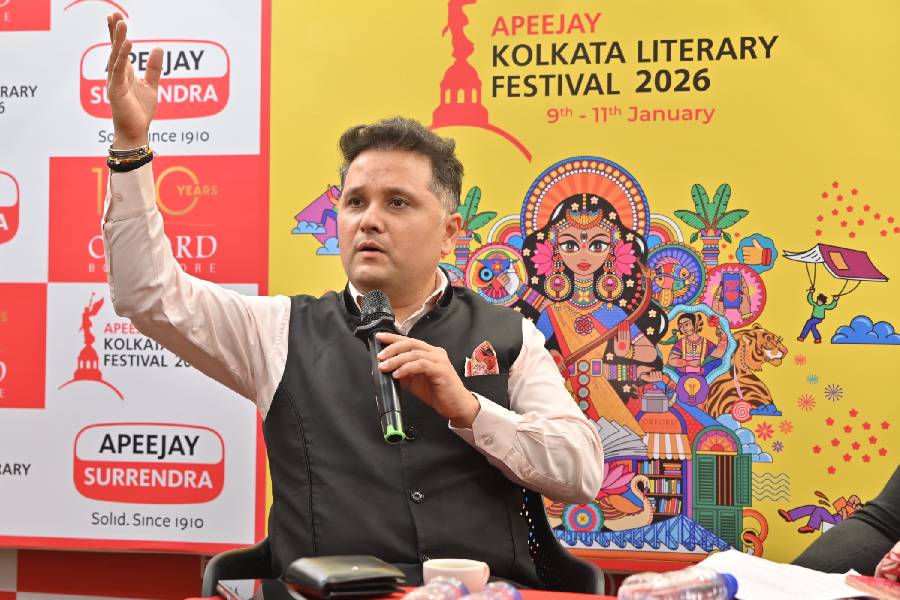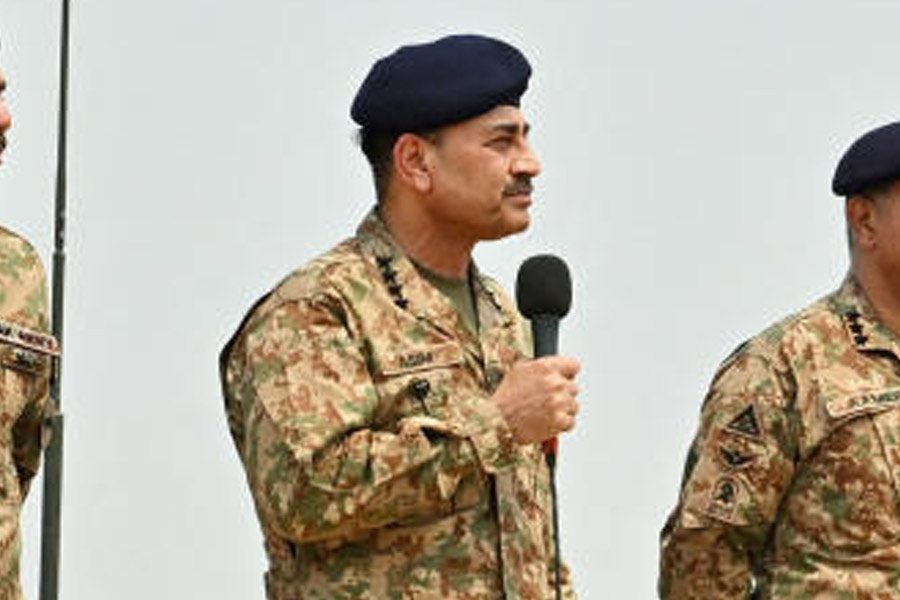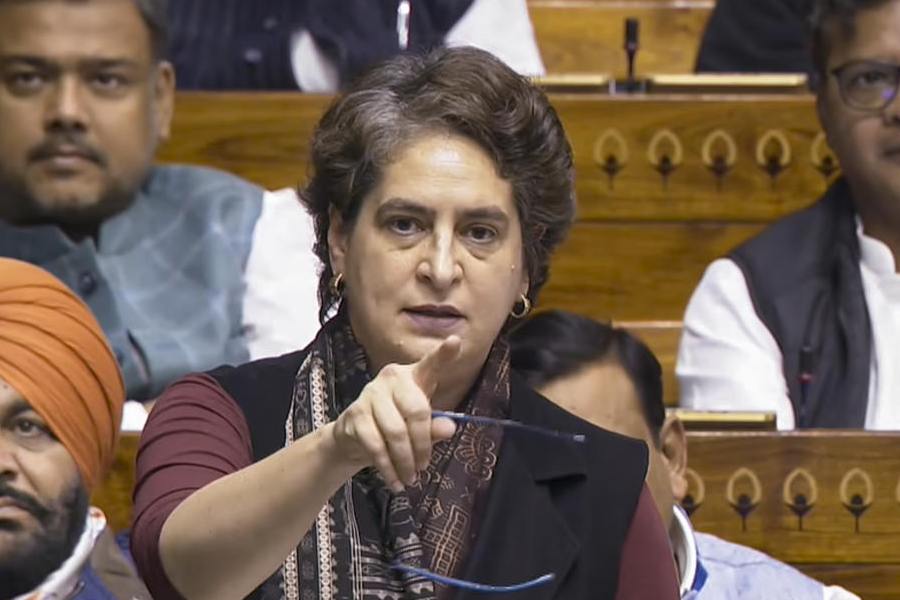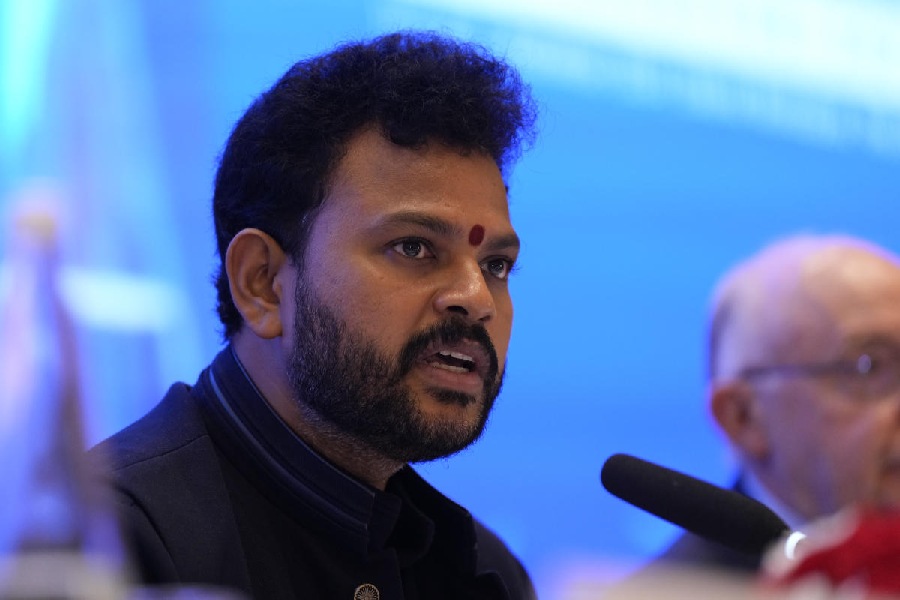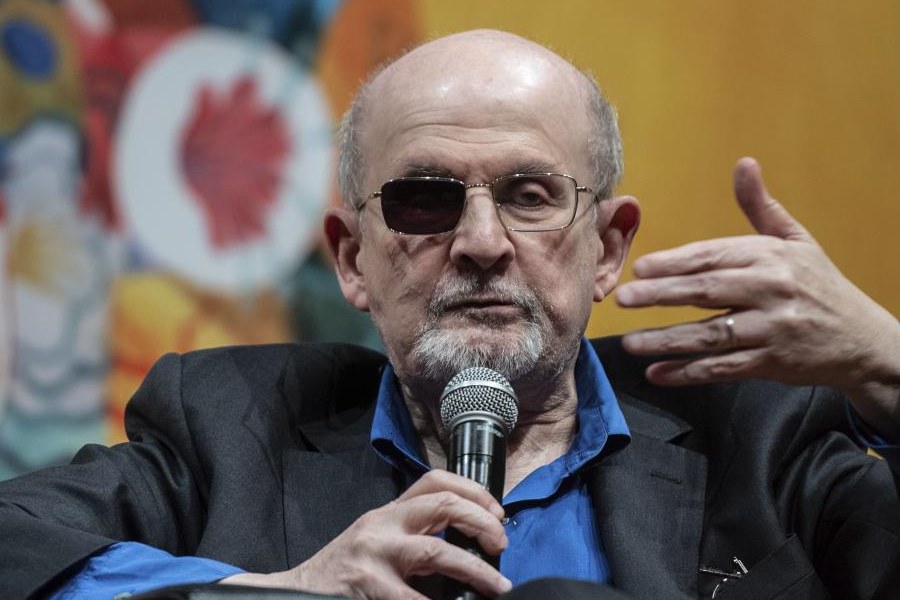The “herd immunity” strategy loses appeal as Covid-19 cases surge.
“My mother’s not expendable, your mother’s not expendable, our brothers and sisters aren’t expendable,” New York governor Andrew Cuomo angrily replied when asked by a reporter if the elderly might need to be sacrificed until the world developed “herd immunity” to Covid-19. “We’re not going to accept the premise human life’s disposable and we’re not going to put a dollar figure on human life,” he added.
Cuomo’s been an eloquent advocate of testing, isolation and prevention in the debate about how to tackle Covid-19. He’s determined to fight to save each and every life. On the other side of this debate have been leaders like Brazil’s president Jair Bolsonaro who believes in herd immunity -- allowing the virus to infect around 80 per cent of the population so it peters out. Bolsonaro said, “Sorry, some will die,” and declared protecting the economy took priority over containment.
Now, though, confronted by projections of massive death tolls, countries which were laissez-faire about Covid-19 are walking back their policies, tightening controls.
The Netherlands’ Prime Minister, Mark Rutte, said in mid-March the country of 17.1 million people would pursue herd immunity while protecting at-risk people like the elderly. “In the near future, a large part of the Dutch population will be infected with the virus... building controlled group immunity,” he declared.
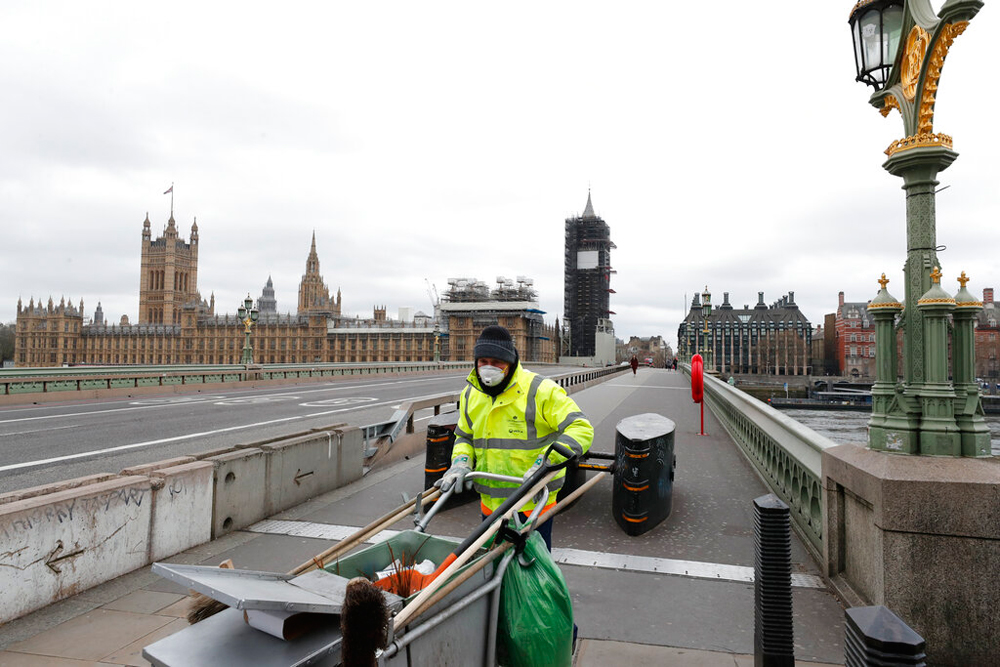
A street cleaner wearing a mask crosses an almost deserted Westminster Bridge in London on Monday (AP photo)
But he’s switching strategies amid a dramatic rise in cases, closing restaurants, theatres, museums and hairdressers. He’s told people to work from home if they can. He hasn’t introduced “shelter-in-place” orders but they’re looming. On Friday, the Netherlands had 8,603 cases, up 1,117 from the previous day, a jump’s bang in line with other countries where the disease suddenly has taken off. Deaths also jumped by 112 on Friday, driving the total to 546.
‘Herd immunity’ rethink
The Netherlands, which boasts one Europe’s best healthcare systems, has a Covid-19 mortality rate of 6.3 per cent, contrasting with neighbouring Germany, which adopted early and aggressive testing-and-trace tactics, allowing for treatment. Germany has a 0.06 per cent mortality rate.
Keep those numbers in mind as you read on. Sweden also went the herd immunity route, convinced it wasn’t worth destroying the economy to save lives, but now is rethinking. On Friday, deaths spiked to 66 from from 41 while cases jumped to 2,806 from 2,272. One solution being eyed is blockading virus hot-spot Stockholm from the rest of the country.
Japan, too, underplayed the virus, possibly in hopes the Olympics could go ahead but it’s changed its tune with infection levels suddenly rising. Prime Minister Shinzo Abe has warned the country is nearing a “national emergency” while Tokyo governor Yuriko Koike said the city may have entered a “critical phase before a possible infection explosion.” She’s asked residents to work from home and not eat out “too much.” There were 41 new Tokyo cases, pushing the total to 212.
Japan still has only around 1,500 cases, far below numbers in other parts of the world. The low infection rate has been attributed to Japanese habits of bowing rather than shaking hands, wearing of face masks and frequent handwashing. At the same time, Japan restricted testing to those exhibiting symptoms, observers note.
UK makes U-turn
UK Prime Minister Boris Johnson embraced herd immunity but made a U-turn when confronted with Imperial College-London models that suggested a quarter of a million of the 67-million population would die unless lockdowns, social distancing and strict isolation for patients were imposed. Johnson and several of his cabinet have come down with the virus, victims of what critics say has been government complacency.
In Russia, where the disease has moved relatively sedately, President Vladimir Putin played down the crisis. The government declared a weeklong national holiday for Russians but was quickly forced to specify that Russians must work from home and they could not holiday at the Black Sea. “It’s not days off on holidays in the classic understanding of the word,” a government spokesman clarified in a statement shorn of bureaucratese.
In fact, herd immunity advocates look to be increasingly on the back foot as more becomes known about the virus. Yes, the elderly and people with underlying conditions are most likely to die from it. But Covid-19’s also seriously sickening and killing a substantial portion of young people and people without any other health issues. In addition, it’s not known yet when people with the virus become contagious -- some experts believe infected people can pass on the illness up to 14 days before showing symptoms.
Countries as far apart as India, Italy, Spain, France, Poland and sparsely populated New Zealand now are under complete lockdowns. China, which was the virus epicentre, imposed lockdowns in places affected by Covid-19 that it later lifted as cases dwindled.
In Germany, there’s a full lockdown in provinces like Bavaria and Saarland and semi-total lockdowns elsewhere with restaurants and gyms closed. Totally, one-third of the human race is under some form of house arrest. The idea is even if a lockdown doesn’t halt the disease in its tracks, it will “flatten the curve” or slow infection rates so hospitals won’t be swamped by patients. Also, winning more time allows countries to procure ventilators, ICU beds, testing kits and protective gear.
Oxford University study criticised
On the other side of the argument, a report from Oxford University’s Evolutionary Ecology of Infectious Disease group reckons only one person out of 1,000 who contracts Covid-19 needs hospitalisation. This theory implies as much as half of the UK’s population has been exposed and the country’s well on its way to herd immunity. The Oxford University study has been attacked by other epidemiologists who say its numbers are flawed.
What may be the best example of the virtues of taking a tough approach to the virus versus a laissez-faire one is the tale of two countries -- South Korea and the US. Both reported the first Covid-19 diagnosis January 20 but what happened next differs sharply.
South Korea acted with lightning dispatch to detect and isolate those with Covid-19. It summoned 20 firms and told them to come up with a test. A week later, one was approved and South Koreans identified people with the virus and quarantined them to stop the illness’s spread. Over 350,000 tests later, South Korea appears to have largely contained the illness.
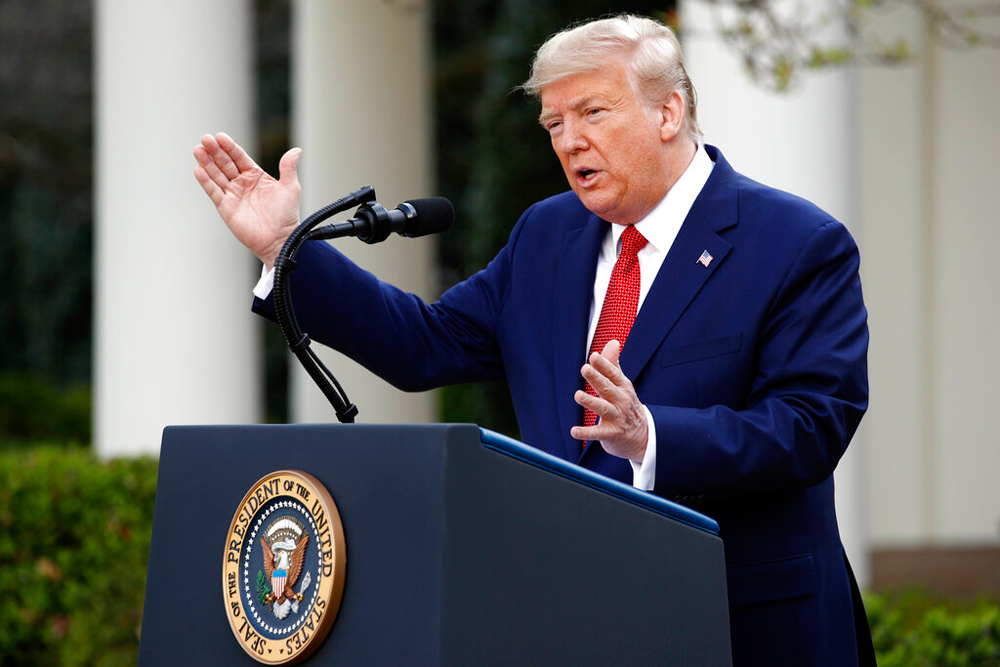
President Donald Trump speaks during a briefing at White House in Washington on Sunday (AP photo)
In the US, President Donald Trump kept repeating the virus was “totally under control,” ignoring health experts’ advice to “act now to prevent an American epidemic.” US experts say lack of early testing is why the US cases have charged past 120,000, far eclipsing China’s, and the death toll Saturday crossed 2,100, twice the level from two days earlier. While the US has ramped up testing, it’s still way behind South Korea. “The US response will be studied for generations as a textbook example of a disastrous, failed effort,” Ron Klain, who led the fight against Ebola in 2014, was quoted as saying by the New York Times. The country’s also massively short of protective gear, hospitals beds and ventilators as the virus hammers New York, California and other states.
Italy did too little, too late
The virus has devasted Spain and Italy, too. Their experience highlights the need for early steps to isolate people with the virus and curbs on movement, experts say. Italy implemented isolation piecemeal. First, towns were shut, then regions and finally the country. But Italian officials say these efforts were too little, too late to gain the upper hand over the virus. As in the US and in the UK, Italy at first sought to dismiss the threat and didn’t want to take tough containment action for fear of hurting the economy.
The penalty for that lackadaisical approach has been catastrophic with the virus claiming 10,023 lives in Italy, the most worldwide. In Spain, where the deaths stand at 5,690, it’s been a similar story. In Spain’s case, the virus’s spread was accelerated by large sporting events held even after dangers of big crowds were known.
China, after initial foot-dragging, vigilantly traced potential suspects using artificial intelligence. Containment was done swiftly thanks to China’s authoritarian administration. China, which has reported 81,439 infections and 3,300 deaths, says “domestic transmission has basically been stopped” but it fears a second infection wave from Chinese returning from abroad.
Lowest per-capita testing rates
So what are the lessons for India in the first week of its 21-day lockdown? Coronavirus cases have hit 1,024, while deaths total 25. The caseload’s surprisingly low compared to elsewhere, something experts say may be because India has one of the lowest per-capita testing rates in the world.
“It’s too early to assess the lockdown’s effects. We’ll have to see if the cases are slowing after two weeks. If there’s no change, the lockdown will have to continue,” said Dr Shahid Jameel, chief executive officer, The Wellcome Trust/DBT Alliance. He called the lockdown “a necessary first step” but said much wider testing is vital. “You have to test aggressively. If you can’t measure it, how can you control it?” he said.
India is getting more testing kits and securing more ventilators but right now it looks woefully ill-prepared for what could be the battle of its life. Protective gear is still in severe short supply and so are ventilators. “Where will the government buy ventilators? You don’t go to buy a submarine when the war is on.” said Jameel.
India has its own unique set of challenges in fighting the virus with its 1.3 billion population, the vast majority of whom are still desperately poor. Prime Minister Narendra Modi has successfully communicated to the country the threat the virus poses. Experts worry hunger may generate more deaths than the virus so effective food and cash distribution is vital. Also, police being overzealous in enforcing the lockdown could backfire in people defying the order.
No shortcuts
Still, the country can take advantage of established best-practices in tackling Covid-19 around the world. The World Health Organization has been clear in saying lockdowns aren’t enough to extinguish the virus, they merely create “a second window of opportunity” for attack. It’s “buying time and reducing the pressure on health systems,” WHO Director-General Tedros Adhanom Ghebreyesus said. “Aggressive measures to find, isolate, test, treat and trace is not only the best and fastest way out of extreme social and economic restrictions, but they're also the best way to prevent them,' he said.
There can be no shortcuts but India, early into its lockdown with the number of cases relatively low, is “well positioned to fight the virus,” said Michael Ryan, who heads the WHO Health Emergencies Programme. India, he noted, got rid of polio with targeted measures, breaking down what was needed village-by-village. 'There is a way out,' he said.


